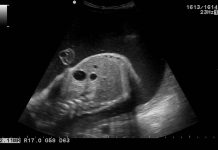Fig is commonly known as Ficus Carica. It is a species of flowering plant in the mulberry family. They are either green or purple in color with pink flesh and have a body that resembles a teardrop. Figs are thumb-sized and are filled with hundreds of seeds. They have a mild sweet taste. It is cultivated in warm climates. They are more common in Mediterranean areas and are also extended from Asiatic Turkey to northern India. Figs are super good for health. They are rich in minerals like calcium, magnesium, iron, potassium, and copper. They are also rich in Vitamin A and Vitamin K which make them a good source of antioxidants as well. Figs have a high level of natural sugars and soluble fiber and they contribute to the overall wellness of the body. These fruits are rich in calories as 2 medium-sized raw figs have around 74kacl and dried figs have 249kacl.
Types of figs
Nature offers a large variety of figs that have slightly different properties from each other. They are also differentiated on the basis of their origin or where they are cultivated. Some common types of Figs are:
- Adriatic Figs
- Black Mission Figs
- Brown Turkey Figs
- Cali Myrna Figs
- Kadota Figs
Health benefits of figs for babies
The inclusion of figs in the diet can be proved really beneficial. It is completely safe for babies as well. They are rich in nutrients and are a great source of fiber which helps in the overall development and growth of babies. It strengthens their immune system. The presence of antimicrobe agents in fig helps the body to fight against common flu and cold.
Keep body hydrated
Figs help in maintaining the hydration level in the body because of the high water content in them. So, if someone consumes less water in the day figs can be proved beneficial for them. But it is important to remember that it is not an alternative to it.
Helps digestion
Fiber-rich food is really important in the diet because they help digestion. Figs have a good amount of fiber in them due to which they are good for digestion in children. It also helps in better absorption of nutrients in the body.
Strengthens immunity
Adequate consumption of figs can improve the ability of the body to fight against common flu and cold. It is rich in necessary minerals and vitamins. Hence it strengthens the immune system of the body and resistance to diseases.
Improves dental health
Being rich in calcium, they are really good for the teeth and the overall dental health of the babies. In the growing stages, the consumption of figs can be proved really good. It helps avoid easy breakage of teeth and gum-related problems.
Good for liver
Including it in a baby’s diet helps in reducing the chances of problems like hepatitis, jaundice, and other liver-related infections. Even the doctor suggests figs for babies.
Improves development
Fresh fig can enhance the overall development and growth of babies because they have necessary nutrients like vitamin B5 and vitamin B6 which helps in call development of the body and improves growth.
Strengthens bones
This fruit is rich in iron and calcium. Therefore it is really good for the healthy development of bones and prevents them from easy breakage. Including it in a baby’s diet can reduce the chances of bone deformity up to some extent.
Promotes skin health
It can be really beneficial for people who have skin allergies. And can also prevent itchiness and dryness of skin among children.
Figs in their diet
So, it can be said that the consumption of figs is completely healthy for babies. It can be included in their diet from the age of 6 months. As they are soft and pulpy, chewing them is not a problem as well. Because of its numerous benefits, even doctors advise including a variety of figs in a child’s diet plan. According to studies, fresh and raw Ficus carica is much more beneficial compared to dried figs.
But before feeding it to your child one thing must be kept in mind. Sometimes it can lead to choking hazards because of the huge quantity of small-sized seeds in them. So, one must be careful and feed a small quantity of perfectly mashed figs at a time. So such hazards can be avoided and all the benefits of this nutritional food can be fully absorbed.
Including it in babies diet
- Chop it in small chunks and add to cereals or oats.
- Mash it with yogurt.
- Give it as it is by chopping.
- It goes amazingly with ricotta cheese.
- Can serve it as a smoothie.
Here is a quick fact to remember that the skin of fig is much healthier than its pulp so, don’t eradicate it the baby is comfortable in eating.
Side effects of fig
- It can interfere with blood-thinning medication because it is rich in Vitamin K.
- People with diabetes should restrict the consumption of dried figs because of their rich sugar content.
Conclusion
Figs and dates are two really healthy dry fruits. They are quite different in appearance and dried dates are much stickier than dried figs. Figs have slightly more calories, carbs, and sugar content whereas dates have a little less fiber than figs. Figs can be used alternatively in the diet as they have good benefits for babies.
Reference
https://www.goodnet.org/articles/5-fantastic-fig-benefits













